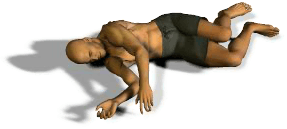
Online First Aid Class - Treating Medical EmergenciesMedical EmergenciesRoles and Responsibilities of First Aid RescuersThis chapter will cover first aid actions for various life threatening medical emergencies.
Asthma is a disease of the air passages. A person having an asthma attack will have trouble breathing. Signs of Breathing Problems Due to Asthma
When someone has a breathing condition such as asthma, they often know about it and carry inhaler medicine which can help them breathe more easily within a few minutes of using it. Sometimes a person can have such hard time breathing that they may need help using their inhaler. For this reason, it is important to be ready to assemble the inhaler and help them use it. Assisting someone having an Asthma AttackIf someone is having difficulty breathing and you suspect an Asthma Attack
Call 9-1-1 or Activate EMS if:
Stay with the victim until someone with more advanced training arrives and takes over. Assembling and Using an InhalerMost inhalers are pre-assembled. Inhalers are composed of two main parts: the canister that contains the medicine and the mouthpiece. Sometimes a spacer can be attached to make it easier to inhale the medicine. Follow these steps to assemble a typical inhaler:
|




